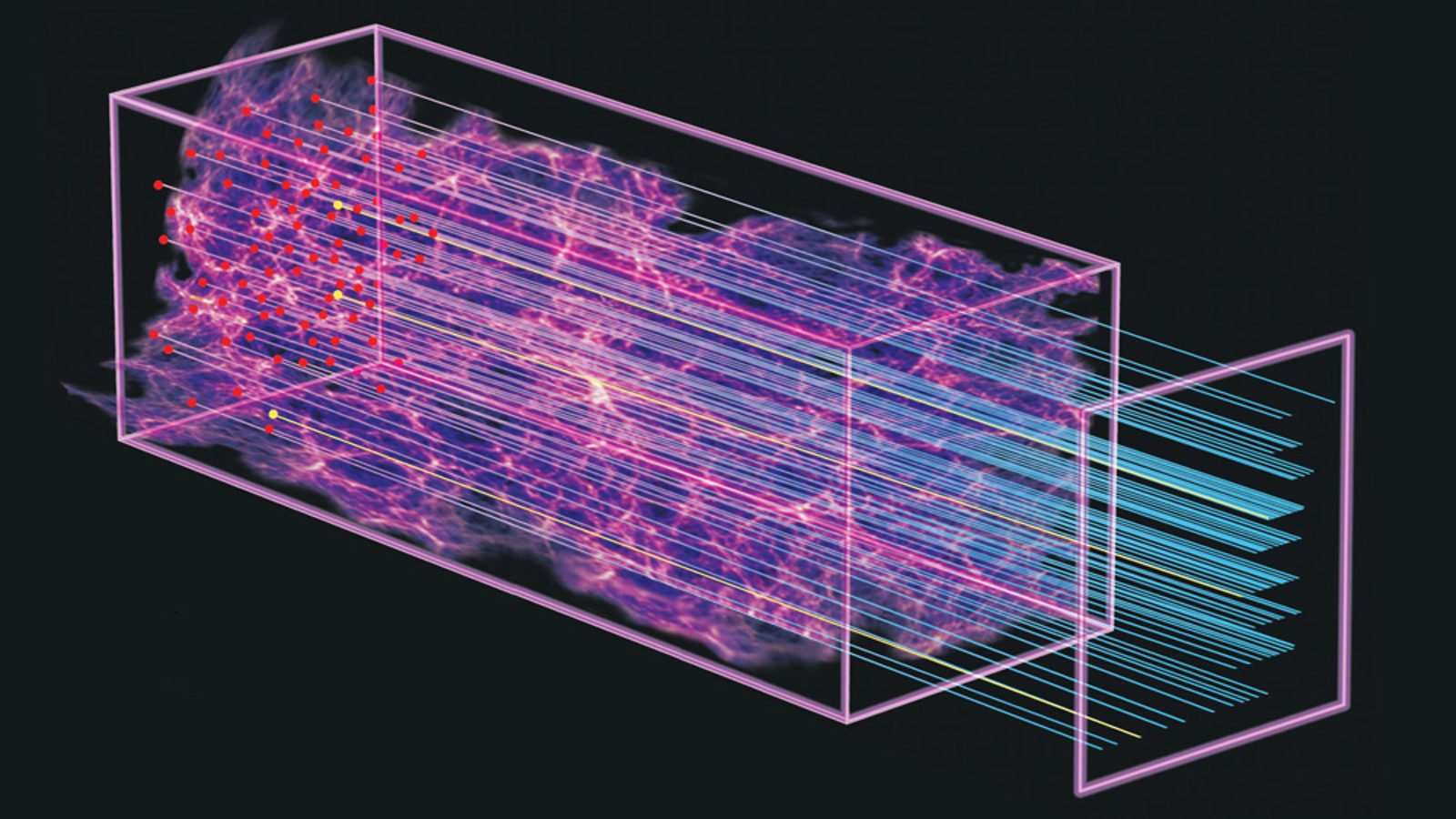The universe is expanding, with every galaxy speeding away from all others at an ever-increasing rate. But it hasn’t always been that way. Eleven billion years ago, the speed of that expansion was beginning to slow as gravity pulled galaxies in toward one another. That was before dark energy came into play.
Now, thanks to data from the Baryon Oscillation Spectroscopic Survey, part of the Sloan Digital Sky Survey, scientists have looked back in time to view the universe as it transitioned from expanding at a decelerating pace to an accelerating one fueled by the repulsive force of dark energy.
The collaboration achieved this not by directly observing light from galaxies that existed so many billions of years ago—as that light is now too weak to be observed by even today’s best telescopes—but by viewing the much stronger light of quasars, extremely bright emissions streaming from the region around a large black hole at the center of a distant galaxy.
As the light from early quasars traveled more than 11 billion light years, it passed through the hydrogen gas between galaxies in the distant universe. Where the gas was dense, it absorbed more light than were the gas was thin. (In the illustration above, the dots at left represent distant quasars, and the blue and yellow lines represent light traveling through clouds of hydrogen gas.)
By carefully measuring this dappled light, scientists were able to make three-dimensional maps of the early universe. What’s more, by comparing these maps with similar maps made from galaxies emitting their light at other points in the universe’s history, the researchers were able to see how the expansion of the universe changed over time, beginning to accelerate about 7 billion years ago thanks to the repulsive push of dark energy.
"No technique has ever been able to probe this ancient era before," says BOSS principal investigator David Schlegel of the Lawrence Berkeley National Laboratory, in a press release issued by the SDSS collaboration. "Back then, the expansion of the universe was slowing down; today, it's speeding up. How dark energy caused the transition from deceleration to acceleration is one of the most challenging questions in cosmology."
As the collaboration continues to collect more data, it seeks to refine these observations to learn more about dark energy’s origins and its effects on the early universe.



